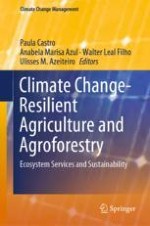2019 | OriginalPaper | Buchkapitel
People and Parks: On the Relationship Between Community Development and Nature Conservation Amid Climate Change in South-Eastern Zimbabwe
verfasst von : Wedzerai Chiedza Mandudzo
Erschienen in: Climate Change-Resilient Agriculture and Agroforestry
Aktivieren Sie unsere intelligente Suche, um passende Fachinhalte oder Patente zu finden.
Wählen Sie Textabschnitte aus um mit Künstlicher Intelligenz passenden Patente zu finden. powered by
Markieren Sie Textabschnitte, um KI-gestützt weitere passende Inhalte zu finden. powered by
